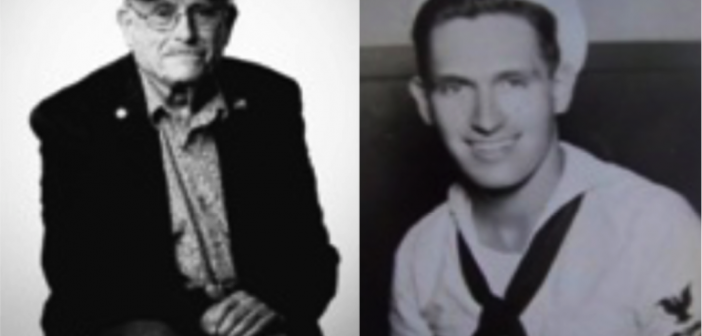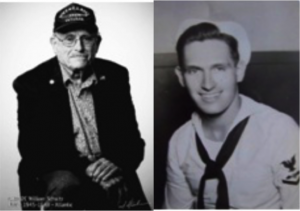THE ROLE OF ELECTRONICS IN THE WWII US NAVY, AND ITS POST WAR LEGACY About our speaker: BILL SCHULTZ, PHD
Professor and chair of the Computer Information Systems Department at the State University of New York College in Buffalo for 22 years, 1975 – 1997. At the beginning of his senior year in high school, at age 17, Bill enlisted in the United States Army Air Corps for pilot training. He was a private, US Army, on inactive duty all through his senior year in high school, 1944/45. Germany surrendered ending the war in Europe one month before US Navy 1945 – 1948
Bill’s high school graduation in May, 1945. The Army Air Corps discontinued its intensive training for pilots, so Bill received an honorable discharge from the US Army before he graduated from high school. He applied to the US Navy flight program, but the Navy found a vision problem that resulted in rejection for Navy pilot training. He then enlisted in the US Navy Radar and Radio Program.
On completion of the 46 weeks of intensive training in aviation electronics, Bill served on the aircraft carrier USS Philippine Sea, CV-47, the last of the Essex Class carriers. After a short assignment on the Philippine Sea as an aviation electronics maintenance petty officer, he served as an instructor for two years in the Fleet Airborne Electronics Training Unit, Atlantic Fleet, at the Naval Air Station in Norfolk, VA, to train Navy pilots in the use of all electronic equipment onboard US Navy aircraft. This two-month program for Navy pilots included both hands-on training on the ground, as well as in-flight training, in the use of airborne electronics.
After completing military service, Bill attended the University of Wisconsin, Madison, where he received his bachelors, masters, and doctorate in electrical engineering. He was an instructor and assistant professor in the College of Engineering, University of Wisconsin, 1955 – 1958.
After receiving his doctorate, he was employed at the Cornell Aeronautical Laboratory of Cornell University, at the Buffalo, NY Airport. (1958 – 1975) Cornell Aero Lab was the former research lab of the Curtiss Wright Aircraft facility in Buffalo, where the P-40, C-46, and Curtiss Wright SB2C dive bomber were manufactured during WW II. He was a research engineer and assistant department head of the Avionics Department and was the Head of the Computer Center for six years. Part of his assignment at the Cornell Aeronautical Laboratory was to serve as a full-time visiting assistant professor, in the Graduate School of Electrical Engineering, Cornell University, Ithaca, NY, for the 1960- 1961 academic year.
Bill was professor and chair of the Computer Information Systems Department at the State University of New York College in Buffalo for 22 years, 1975 – 1997.





